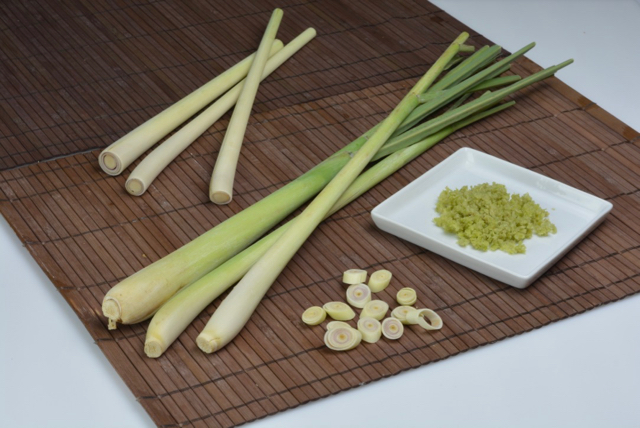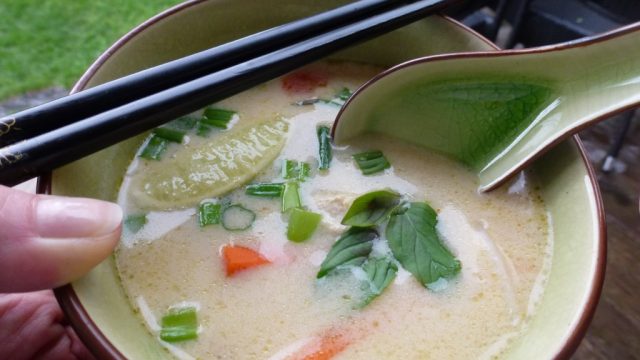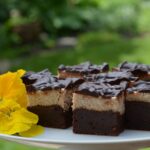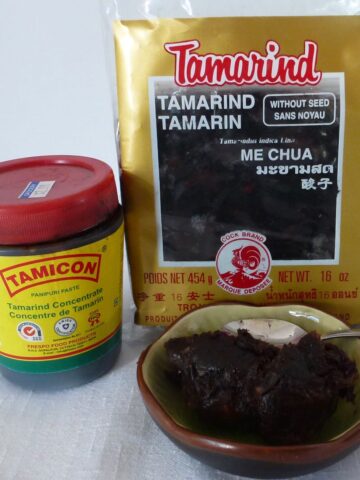Learning How To Use Lemongrass will open the door to the foods of Southern Asia and India. This herb has a subtle citrus flavour that is unique. It's used in soups and stews, curries and stir-fries, marinades, salad dressings and tea. Older recipes list lemon zest as a substitute but there really is no substitute for this grassy herb. You simply have to try it to know the taste.
Sure, fresh is always better, I’m not going to argue with that but frozen is an option too. Stop passing over recipes with lemongrass and just go get some.

Buying Lemongrass
FRESH - Fresh long stalks are sold loose or bunched together like green onions. You can also find them already trimmed and packaged on a small tray covered with plastic wrap. I like to buy it at the Asian grocery store but large grocery chains sell it too. I buy fresh stalks for special occasions or when I want them for a specific recipe.
If you buy more than you needed you can freeze the leftovers. Whole stalks will be limp when thawed but can be used to flavour soups and curries.
FROZEN - In the freezer section of Asian markets you can find frozen, chopped lemongrass. Sold in little plastic containers, it's convenient for the everyday home cook. I keep some in my freezer all the time and even it it sits there, untouched for months, when I want some I've got it.
Frozen lemongrass is processed so it does have an ingredient list. Avoid the brands with artificial ingredients like blue number one artificial colour. Keep looking until you find just lemongrass or chop up fresh stalks and freeze it.
DRIED - Dried lemongrass can be bought as whole or cut stalks, coarsely chopped and sliced just like dried chives. It isn't my favourite but it will impart its' unique citrus flavour.
Using Lemongrass
Fresh stalks need both ends trimmed before using. First cut off the top one-third of the stalk. Next trim the bottom root end cutting about one-inch off. Then it's easy to pull off the toughest outer pieces from the stalk, two or three pieces depending how thick the stalk is. Now you have the most tender part of the stalk to chop or slice depending on the recipe. You can even use them whole as skewers.
Don’t worry about whether you did it right, just try it. If you don't remove enough of the stalk or root there may be chewy bits in your dish. Notice when it's almost too woody to chop because that's too woody to eat.
All of the stalks and end pieces can be used to flavour soups and curries or simply discarded. (You can freeze them for this purpose too.) Some recipes say to smash the tough outer pieces of the stalk with a rolling pin or the side of a knife. This releases their aromatic oils before adding them to soups and curries. I only do that if the recipe specifically says to.
The Convenience of Frozen
I use a label maker for many things in the kitchen to give me the information I need. I say label for learning! If this is a new ingredient for you label the container like this:
| 1 tablespoon chopped = 1 stalk fresh |
I generally take the frozen lemongrass out of the freezer when I begin my recipe. Once it sits for ten minutes I can easily break off the amount I need with a spoon or knife. Once you're comfortable using frozen lemongrass use this amount as a guide and adjust to suit your own taste.
DRIED - Dried sliced lemongrass should be soaked for two hours before using. If you are going to try dried ground lemongrass powder make a note on the inside of a nearby cupboard:
| 1 teaspoon dried = 1 stalk fresh |
So now you know how to use lemongrass I hope you'll try one of these recipes. Let me know in the comments below how it went.
The Recipes






















Leave a Reply